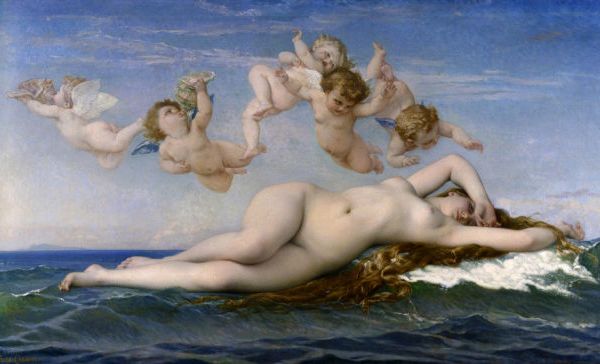Suddenly, you see it everywhere – in airports, hotels, restaurants, and of course, in most public bathrooms. It’s on sale in corner kiosks, wedged conspicuously between the gum and People magazine. And in a blink, it’s been seamlessly integrated into life as an essential everyday item. Just five years ago, the product never existed anywhere, and yet if you were to conduct a straw poll, most would confide that they simply couldn’t live without it.
I’m not talking about the iPod or the Blackberry, or even your favorite pair of Crocs – I’m talking about antibacterial hand gel – the kind you can squirt whenever you feel the need to cleanse. From what I see around me, a lot of people seem to be feeling pretty dirty these days.
It’s a phenomenon prompted by bird flu and swine flu. Ironically, neither virus can be prevented by sanitary wipes or cleansing gels, since both are spread through minute droplets sneezed or coughed out by someone who’s infected. But the thought of contagious diseases that have the capacity to kill has driven us into a sanitation spin.
A while back I conducted an experiment on NBC’s ‘Today’ show. It involved scanning a woman named Kelly’s brain as she walked down the supermarket aisle. The objective was to study her thought patterns as she made a selection from the thousands of products on offer. Supermarket executives closely monitored the large screens displaying Kelly’s brain activity as she engaged in her choices. They were thrilled with her selection of brands, and applauded her decision-making processes.
Kelly first picked a baby shampoo, explaining after that her child’s pediatrician recommended the brand. Interestingly, this very choice generated the most brain activity during the shopping spree, supporting research that says that when an authoritative figure recommends a brand, our brains focus more intently. This probably goes some way towards explaining why testimonials remain effective. Furthermore, the executives were intrigued by the fact that the ‘discount’ signs consistently registered on the scans, despite Kelly denying being affected by them.
There was one thing that the executives, the film crew, the producer, and even the viewers failed to notice. Every time Kelly picked a product off the shelf, the brain measured a 4-second reaction. And it’s this reaction time that can force a manufacturer to change everything about their marketing strategy, including their packaging and marketing campaign.
Let’s take a moment to think about this. Every time Kelly selected an item from the shelves, she held it in her hands momentarily and examined it. There’s nothing surprising about this. What was surprising is that once she’d made her decision to buy that very product, she’d return it to the shelf, and pick another just like it, stashed three rows behind. This whole action took less than four seconds.
Did she consider the first item dirty? Perhaps. Research reveals that a similar experiment conducted five years ago, minus the brain scans, revealed their ‘Kelly’ couldn’t have cared less. What she initially picked off the shelf went directly into her trolley. But now, this fear of contamination has totally entered the shopper’s psyche.
The brain scans showed that as Kelly took the product off the shelf and at the same moment decided to buy it, a strong activation in the amygdale area of her brain took place. The amygdale is responsible for generating fear and danger, as well as psychological discomfort. The fear was registered with every first contact Kelly had during the entire shopping expedition, from the Dove soap to the Gillette foam, as well as the Elizabeth Arden beauty products. The fearful response grew even more dramatically when the product of her choosing was the last item on the shelf. So much so, that she opted for another brand rather than go with the last-standing item.
This, you may say, is the response of just one woman, and as such, cannot be held as an ultimate truth. I suspect however, that her reaction is far from unusual.
After her shopping trip, I asked Kelly why she finally bought the shampoo and gel, while on the other hand she returned the shaver and mascara to the shelf. She replied, “Because I somehow didn’t feel for the brand”. Had I decided to build my future strategy based on the outcome of good, old, conventional qualitative research techniques, I would never know how to solve the problem of Kelly’s brand rejection. However, the deciding 4-seconds measured by the scan revealed that cleanliness had catapulted up the ladder of priorities… now by far surprising any other factor – even though she was a big fan of both the brands she ended up rejecting.
Environmental issues, media fragmentation, and the need for increased consumer interaction with the brand have become the most pressing topics in the branding world. As the globe focuses on these very important issues, another trend seems to have slipped in the side door – the need for sanitization. Despite the insidious nature of this need for clean, the affect on our behavior is so subtle that even consumers are not aware of its power to control our behavior. It’s embedded itself into our culture, our behavior and our decision making to such an extent, that to a large degree it controls where we choose to spend our money.
Whatever you may think of it, those brands who are clever enough to identify and run with it, will be the ones who will be reaping untold rewards. In a consumer population who has come to expect their food to be well sealed and vacuum packed, their expectations have now extended to every category they purchase being sanitized for their protection.
But there’s another message underlying this fact. Far too often we look in the wrong direction for answers, forgetting that we are fundamentally emotional creatures, 85% driven by our subconscious mind. Yet today 100% of all our research seems to rely on studied, conscious research techniques. A little food for thought, I guess. So long as it’s sanitized before we do the thinking!
The Blake Project Can Help: Disruptive Brand Strategy Workshop
Branding Strategy Insider is a service of The Blake Project: A strategic brand consultancy specializing in Brand Research, Brand Strategy, Brand Licensing and Brand Education




3 comments
Florence R. Webb
November 12, 2009 at 7:46 am
Very interesting piece.
Please run a fact check, though, on your statement that flu, being caused by airborne droplets, can’t be prevented by hand cleansing.
Those droplets end up on hands, transferring from hands to doorknobs, shopping cart handles, PIN pads at checkout, etc. Then from your own hands to your mouth or nose, and that IS how the flu gets transmitted.
Every medical expert I’ve heard has agreed that washing and sanitizing of hands is a vitally important practice to contain contagion. Our local hospitals have sanitizer dispensers all over the place. There’s more than branding in that phenomenon.
Giles Dickerson
November 12, 2009 at 11:17 am
Nice discussion Martin. I think the big factor here is the fear of the unknown. As virus and bacteria are “monsterized” in the media for fear driven ratings, and in turn people (who don’t realize news media have no ethical guidelines) are reacting subconsciously. I’d love to see brands that instead of using this fear to their advantage look for ways to disable it and create a product or brand experience that creates calm and relaxation from people’s day to day fears.
Bhavana Jaiswal
November 12, 2009 at 10:43 pm
Lovely observations Martin! However, I’d beg to differ on the observation that Kelly took up a product from 3 rows behind solely due to the swine/ bird flu related contamination. I myself have this practice, and have noticed it across a number of women at the local supermarkets. My own logic for doing this –
(a) shopkeepers are most likely to keep products nearing expiry date in front – I’ve actually found this hypothesis to be true in some cases!
(b) if the product in question is a moisturiser/cream, etc., there is a rare probability that someone has actually squeezed out a little for trial purposes!
It’s true that there’s no guarantee that the products behind are any better – but it’s something that’s followed as a ritual by me now.
Comments are closed.